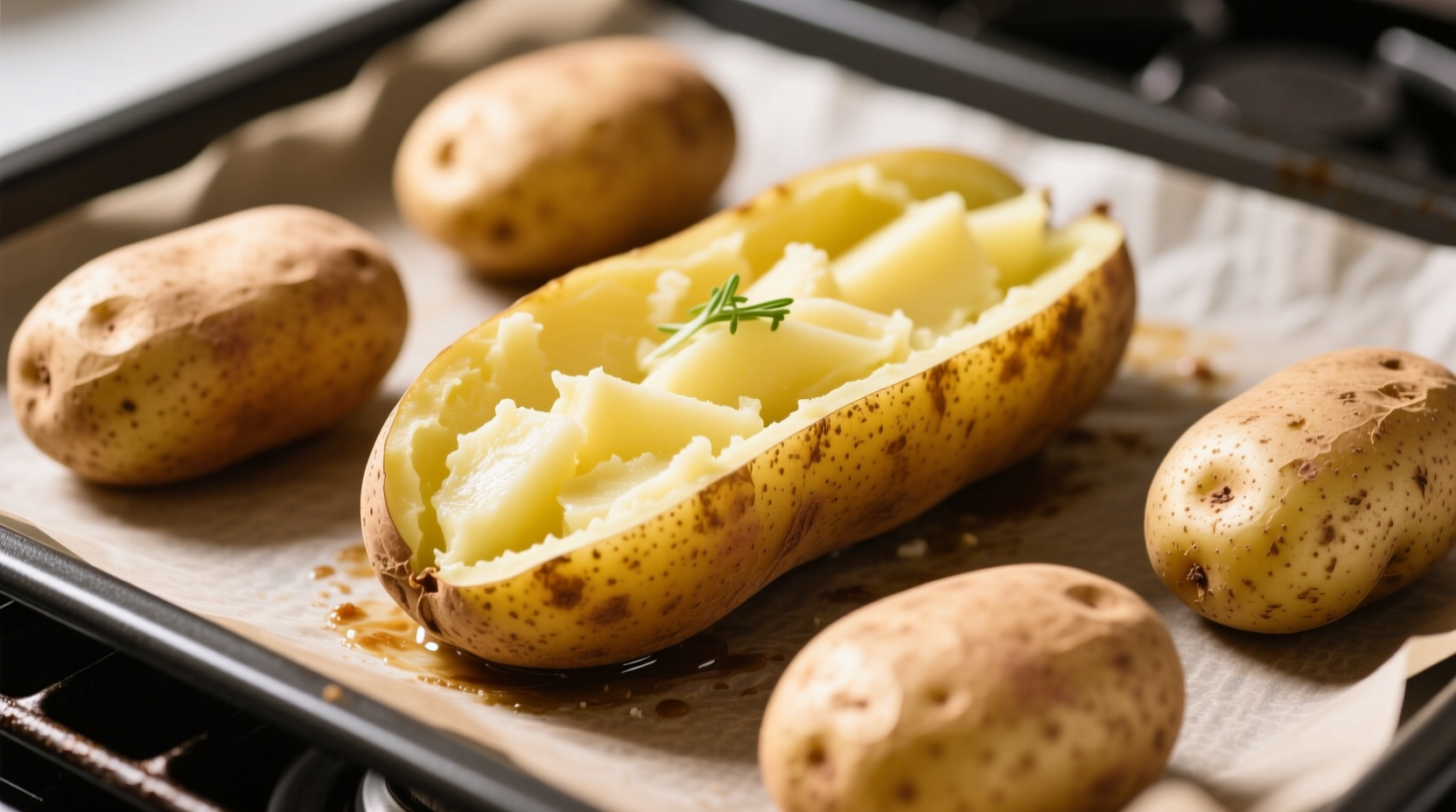Perfect Potato Baking: Your Complete Timing Guide
Nothing beats the simple pleasure of a perfectly baked potato with crispy skin and fluffy interior. But getting that ideal texture requires understanding the variables that affect baking time. Whether you're meal prepping or cooking for tonight's dinner, this guide delivers precise timing information backed by culinary science.
Why Potato Baking Time Varies
The standard "60 minutes" advice often fails because multiple factors influence cooking duration. Understanding these variables prevents undercooked centers or burnt exteriors.
| Factor | Effect on Baking Time | Practical Tip |
|---|---|---|
| Potato size | Small (5-6 oz): 45-50 min Medium (8-10 oz): 55-65 min Large (12+ oz): 75-90 min | Weigh potatoes for accuracy - size alone misleads |
| Oven temperature | 375°F: +10-15 min 400°F: Standard time 425°F: -5-10 min (watch for burning) | Use an oven thermometer - dial settings often inaccurate |
| Preparation method | Foil wrap: +15-20 min (steams) No foil: Crispier skin, standard time Oil rub: Slightly faster heat transfer | Avoid foil for optimal texture unless required |
Step-by-Step Baking Process
Preparation Phase (5 minutes)
Proper preparation sets the stage for even cooking:
- Wash potatoes thoroughly under cold water
- Pierce 4-6 times with fork to prevent bursting
- Rub with 1 tsp oil and sprinkle with salt (optional)
- Place directly on oven rack with baking sheet below to catch drips
Baking Timeline
Follow this professional chef-recommended schedule for perfect results:
- 0-30 minutes: Initial heating phase - avoid opening oven
- 30-45 minutes: Check internal temperature (should reach 180°F)
- 45-60 minutes: Final cooking phase for medium potatoes
- 60+ minutes: Continue checking every 5 minutes for larger potatoes

How to Verify Doneness
Don't rely solely on time - use these foolproof methods to check completion:
- Temperature test: Insert instant-read thermometer into center - should read 205-210°F (96-99°C)
- Squeeze test: Using oven mitts, gently squeeze potato - should yield slightly with no hard center
- Knife test: Insert knife tip - should slide in with no resistance
According to USDA food safety guidelines, potatoes must reach 205°F internally to ensure proper starch gelatinization and eliminate any potential pathogens (USDA Food Safety and Inspection Service).
Troubleshooting Common Issues
Undercooked Potatoes
If your potato has a hard center after the expected time:
- Return to oven and check every 5 minutes
- Ensure oven temperature is accurate (many home ovens run cool)
- Consider potato density - some varieties like Yukon Gold cook faster than russets
Overcooked or Burnt Potatoes
To prevent this common problem:
- Never wrap potatoes in foil for standard baking (traps moisture)
- Place on middle rack, not too close to heating elements
- Use an oven thermometer to verify actual temperature
Advanced Techniques for Better Results
Professional chefs use these methods to elevate basic baked potatoes:
- Par-cook method: Microwave 5 minutes before baking for more even cooking
- Temperature ramping: Start at 375°F for 30 minutes, then increase to 425°F for final 20-30 minutes
- Salt crust technique: Cover potato in coarse salt before baking for extra-crispy skin
Research from the University of Idaho's Potato School confirms that baking without foil produces superior texture and flavor compared to foil-wrapped methods, as it allows moisture to escape properly (University of Idaho Potato School).
Storage and Reheating Guidelines
Proper storage maintains quality for leftovers:
- Cool completely before refrigerating (within 2 hours of cooking)
- Store in airtight container for up to 5 days
- Reheat in oven at 350°F for 15-20 minutes for best texture
- Avoid microwave reheating if possible - dries out the potato











 浙公网安备
33010002000092号
浙公网安备
33010002000092号 浙B2-20120091-4
浙B2-20120091-4